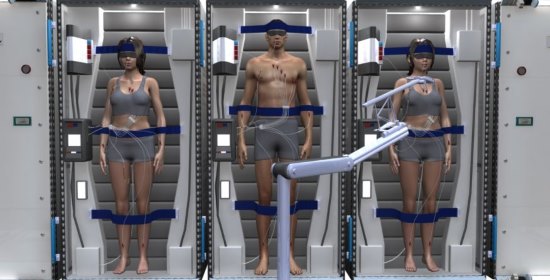Hibernated astronauts for NASA’s Mars mission

nextme.it
NASA has approved the program for Mars exploration, but many critical issues have to be solved before it starts. The journey towards the red planet requires a duration of at least 180 days (one way) with current propulsion technologies. How the astronauts can sustain such a long trip? The new project aims to exploit one of the techniques previously used in the medical field: the astronauts will be hibernating.
diregiovani.itThey say every year: ‘We will go to Marsin 20or 30 years’ – says John Bradford, researcher at the Spaceworks Engineering -. We think hibernation addressing a diverse range of key challenges and perhaps we can eliminate some of the technological requirements in various areas.
Such deep sleep or therapeutic torpor would be able to reduce the metabolic functions. The team is studying the best way to do it: the idea more listed now would be bearing gel used in hypothermia therapy; an alternative could also be the injection of fluids into the blood, but it would be preferable to avoid invasive methods. So we could use a system, called RhinoChill, to induce the Mars crew to torpor. It reduces the body temperature by about one degree every hour, slowly introducing a refrigerant through the nose.
The aerospace engineer Mark Schaffer, from the Spaceworks Enterprises of Atlanta, presented the project during the International Astronomical Congress in Toronto:
diregiovani.itIn theory the therapeutic torpor run since 1980 and it has been a staple for critically ill patients in the trauma care in hospitals since 2003. Protocols exist in many medical centers to induce therapeutic hypothermia on patients, in order to keep them alive substantially until they are able to undergo the type of treatment they need.”
The patients were in therapeutic torpor for a maximum of seven days. The hypothesis of an “induced hibernation”, accompanied by nutrition intravenously, gets interesting for the crews of space missions. This would allow space travel cheaper. In fact, the spacecraft may be smaller and lighter as there would be no need of food or sports equipment for maintenance activities of the astronauts. A simple habitat regulated by artificial gravity would be enough, to prevent bone loss and muscle. The reduction of psychological stress would be also an additional benefit: astronauts, locked up in a very small space for long months, would be aware about it only upon awakening.
The researcher Bradford adds that the study of the animal world is important to the team’s work:
We are doing a lot of research about blacks bears: they hibernate for 5 or 7 months and suffer a muscle atrophy really low. We are trying to understand how it happens. Are processes of the body that deceive the muscles into believing they are active? We are studying it.
In conclusion, the study shows that the pressurized volume required for a hibernating crew could be reduced by about five times, and the mass of food and water would decrease by about three times. Using this technique would require half of supplies required by the usual missions, reducing the weight from about 400 tons to 220. Schaffer says:
Header Image Credits: taringa.netThis would make the launch a lot less heavy.
